Importance of Lighting
Lighting is an essential part of any space. It affects how we see and feel in a room. Good lighting can make a room feel warm and inviting, while poor lighting can make it seem dull and unwelcoming. Proper lighting is crucial for activities like reading, cooking, and working, ensuring we can perform tasks safely and efficiently.
Evolving Trends in Lighting Design
Lighting design has come a long way. In the past, people mostly used simple bulbs and fixtures. Today, lighting is a key element in interior design, with many options to choose from. Modern lighting trends focus on both functionality and aesthetics.
One of the biggest trends is energy efficiency. With the rise of LED technology, people can now use lights that consume less power and last much longer than traditional bulbs. This is not only good for the environment but also helps save money on electricity bills.
Smart lighting is another popular trend. Smart lights can be controlled using smartphones or voice commands. They offer features like dimming, color changes, and scheduling, making it easy to create the perfect lighting for any occasion.
Design-wise, there is a move towards minimalist and sleek fixtures. These lights blend seamlessly into modern interiors, providing illumination without overwhelming the space. On the other hand, vintage and industrial styles are also gaining popularity, offering a unique and nostalgic touch to home decor.
Custom lighting is becoming more accessible, allowing individuals to create fixtures that match their personal style and the specific needs of their space.
In conclusion, lighting is more than just a necessity; it is a vital part of design that can transform any space. By staying updated with the latest trends, one can use lighting to enhance the beauty and functionality of their home or office.
Types of Lighting
Ambient Lighting
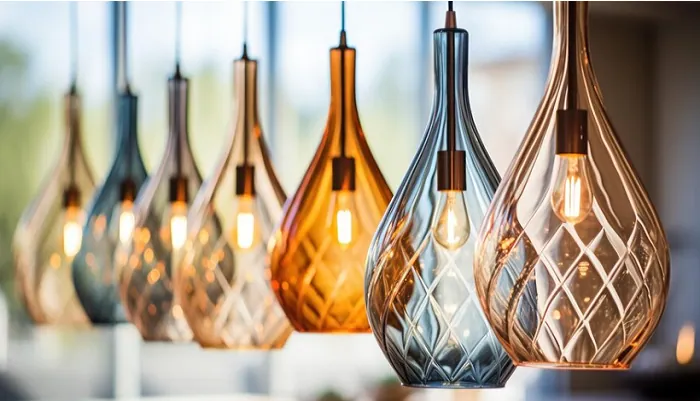
Ambient lighting, also known as general lighting, is the main source of light for a room. It provides overall illumination, ensuring that the entire space is well-lit. Ambient lighting typically comes from ceiling fixtures, such as chandeliers, recessed lights, or ceiling-mounted fixtures. It sets the tone for the room and allows people to move around safely and comfortably.
Task Lighting
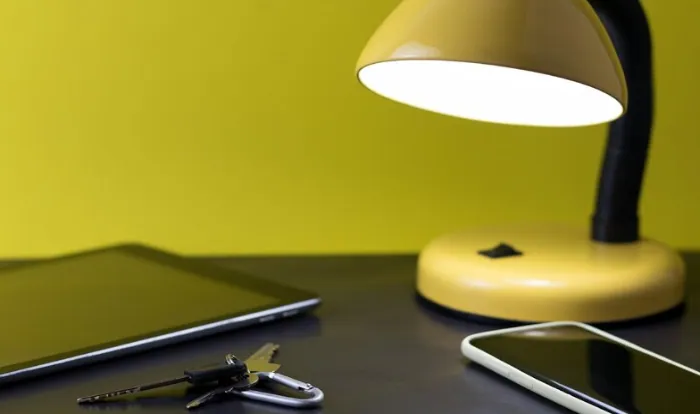
Task lighting is focused lighting that helps you perform specific tasks. Examples include reading, cooking, or working at a desk. Task lighting needs to be brighter than ambient lighting to reduce eye strain and improve visibility. Common sources of task lighting are desk lamps, under-cabinet lights in kitchens, and vanity lights in bathrooms.
Accent Lighting
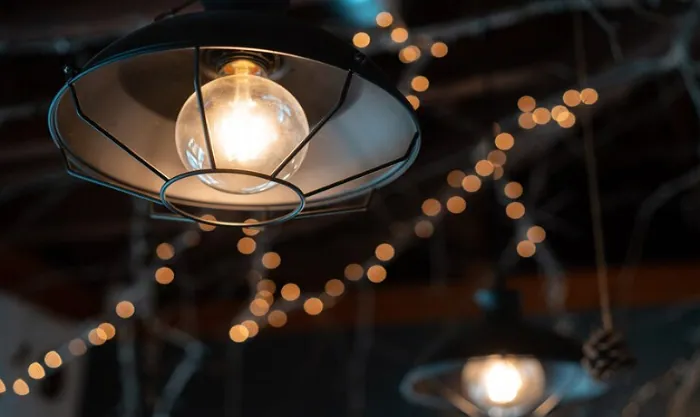
Accent lighting is used to highlight certain features or areas within a room, such as artwork, architectural details, or plants. It adds drama and interest to a space by creating visual focal points. Accent lighting is usually softer and less bright than task lighting. Examples of accent lighting include track lights, wall-mounted fixtures, and spotlights.
Overview of Common Light Sources
LED (Light Emitting Diode)
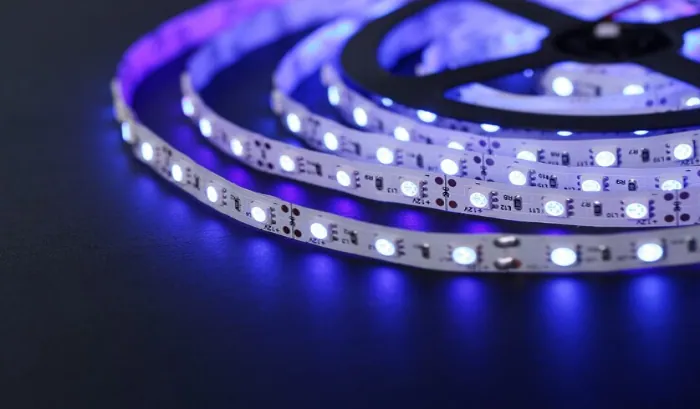
LED lights are energy-efficient, long-lasting, and available in various colors and brightness levels. They use less electricity than traditional bulbs and can last up to 25,000 hours or more. LEDs are versatile and can be used for all types of lighting, including ambient, task, and accent.
Incandescent
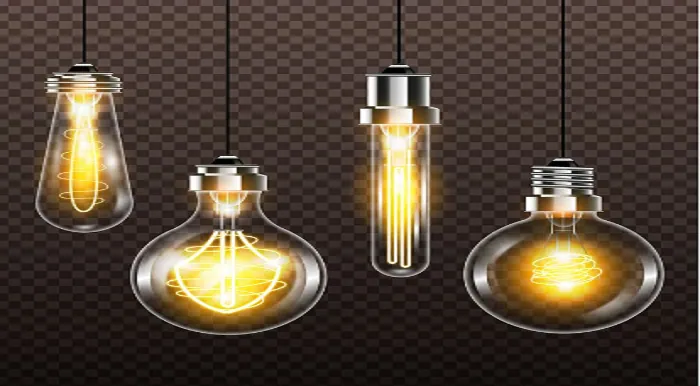
Incandescent bulbs produce a warm, inviting light. They have been widely used for many years but are not as energy-efficient as LEDs or fluorescent lights. Incandescent bulbs typically last around 1,000 hours. Due to their higher energy consumption, many people are now opting for more efficient lighting options.
Fluorescent
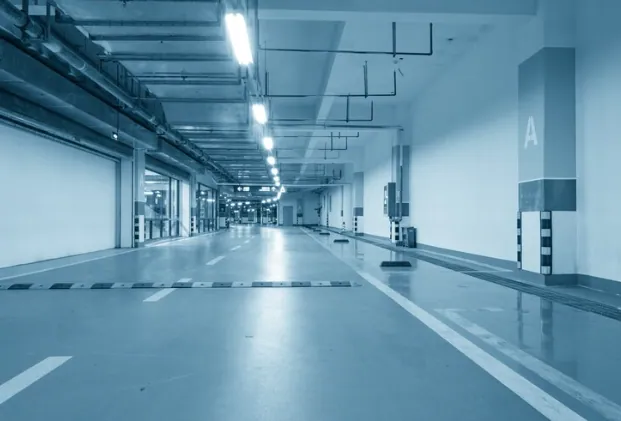
Fluorescent lights are more energy-efficient than incandescent bulbs but less efficient than LEDs. They provide a bright, even light and are often used in commercial settings, kitchens, and basements. Fluorescent lights can last between 7,000 to 15,000 hours. However, they contain small amounts of mercury, which requires careful disposal.
Understanding the different types of lighting and common light sources helps you choose the best options for your space, ensuring both functionality and aesthetic appeal.
Types of Lights
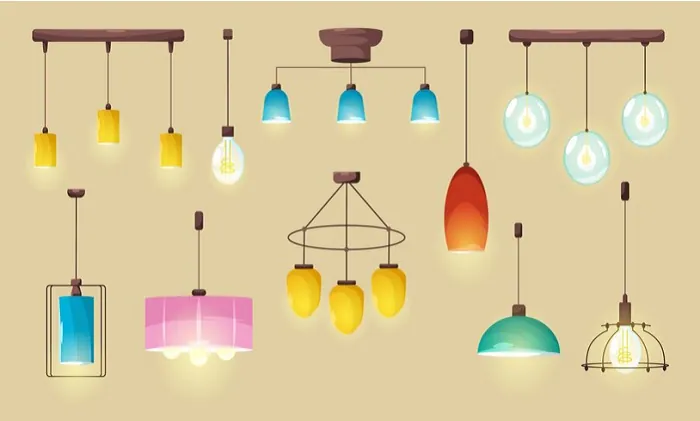
Chandeliers, Pendants, and Recessed Lighting
Ceiling lights are the primary source of illumination in many rooms. Chandeliers add elegance and serve as a focal point, perfect for dining rooms or entryways. Pendant lights hang down from the ceiling, providing focused light, often used in kitchens over islands or dining areas. Recessed lighting, installed within the ceiling, offers a clean, modern look, ideal for living rooms or bedrooms. All these ceiling lights enhance overall illumination, making spaces feel bright and welcoming.
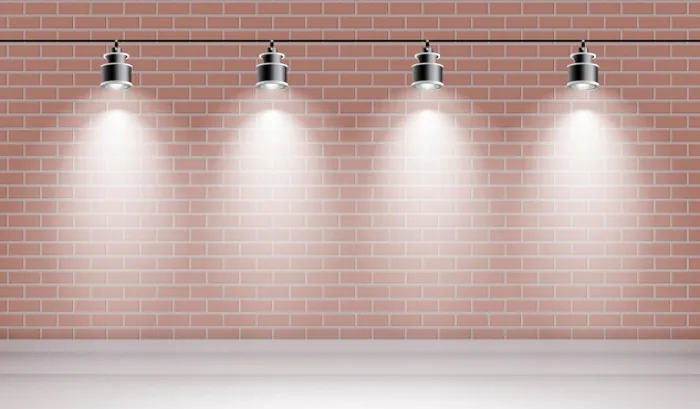
Sconces, Picture Lights, and Swing Arm Lamps
Wall lights are mounted on walls and play a crucial role in creating ambiance and highlighting decor. Sconces provide soft, indirect lighting and are often used in hallways, living rooms, or beside beds. Picture lights are specifically designed to highlight artwork or photos, drawing attention to your favorite pieces. Swing arm lamps offer adjustable lighting, making them perfect for reading nooks or workspaces. Wall lights add a layer of light that enhances the room’s atmosphere and decor.
Floor and Table Lamps
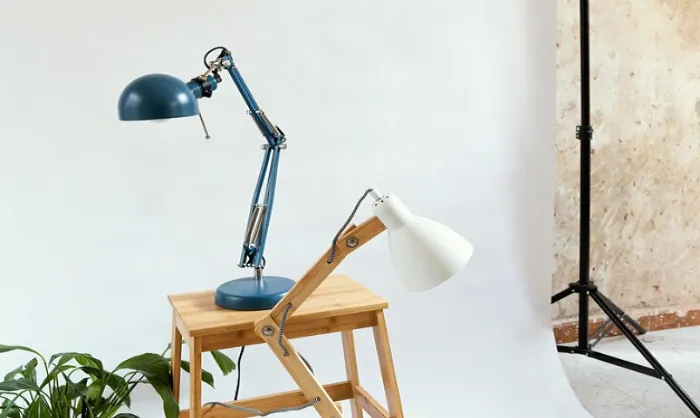
Versatility and Functionality in Different Spaces
Floor and table lamps are highly versatile and functional, suitable for various spaces. Floor lamps can provide general or task lighting, depending on the design. They are great for living rooms, offices, or bedrooms. Table lamps offer focused light and are perfect for bedside tables, desks, or side tables in living rooms. These lamps come in numerous designs, from modern to classic, ensuring that you can find one to match any interior style.
Outdoor Lighting
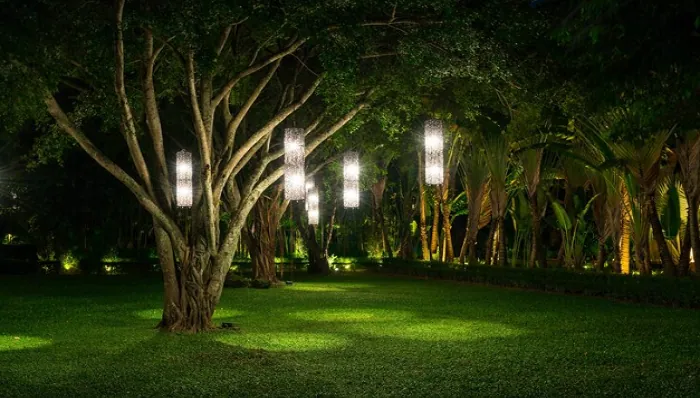
Landscape Lights, Pathway Lights, and Security Lights
Outdoor lighting is essential for safety and aesthetics. Landscape lights illuminate gardens, creating a beautiful nighttime display and enhancing curb appeal. Pathway lights guide you along walkways, ensuring safety by preventing trips and falls. Security lights provide bright illumination around the perimeter of your home, deterring potential intruders and making your property safer. Outdoor lighting not only improves safety but also highlights the beauty of your home’s exterior.
Choosing the right type of light for each area of your home can enhance both the functionality and aesthetic appeal of your space. Each type of light serves a unique purpose, contributing to a well-lit, stylish, and safe environment.
Innovative Lighting Solutions
Smart Lighting Systems and Automation
Convenience and Control
Smart lighting systems bring convenience and control to your home. With smart lighting, you can control your lights using your smartphone, voice commands, or automated schedules. You can adjust the brightness, color, and even set timers to turn lights on and off, making your home more efficient and tailored to your lifestyle. For instance, you can dim the lights for a movie night with a single tap or create a wake-up routine that gradually increases the light in your bedroom. Smart lighting also enhances security by allowing you to control your lights remotely, making it appear as though someone is home even when you're away.
Personalization and Integration
Smart lighting systems can be integrated with other smart home devices, like thermostats, security systems, and voice assistants such as Alexa or Google Assistant. This integration allows you to create personalized scenes and moods. For example, a “Relax” scene might dim the lights and play soft music, while a “Party” scene could involve vibrant, colorful lighting. Smart lighting offers endless customization options, making your home both functional and fun.
Energy-Efficient Lighting Technologies
LED Lights
LED (Light Emitting Diode) lights are one of the most energy-efficient lighting options available. They use up to 80% less energy than traditional incandescent bulbs and last much longer, often up to 25,000 hours or more. This longevity means fewer replacements and less waste. LEDs are available in various colors and styles, making them suitable for any room or purpose.
CFL and Halogen
Compact Fluorescent Lamps (CFLs) and halogen bulbs are also more energy-efficient than traditional incandescent bulbs. CFLs use about 70% less energy and can last up to 10 times longer. Halogen bulbs are slightly less efficient than CFLs but still offer significant energy savings. Both options are available in different shapes and sizes, fitting various fixtures and decor styles.
Solar-Powered Lighting
Solar-powered lights are an excellent choice for outdoor spaces. They harness the sun’s energy during the day and light up your garden, pathways, or driveways at night. Solar lights are easy to install, as they don’t require any wiring, and they are cost-effective because they use renewable energy. This makes them an eco-friendly and budget-friendly option for outdoor lighting.
Incorporating innovative lighting solutions like smart systems and energy-efficient technologies can significantly enhance your home’s lighting experience while saving energy and reducing costs. These modern solutions offer greater control, personalization, and sustainability, making them a smart choice for any home.
Lighting Design Tips
Choosing the Right Light Fixtures for Each Room
Living Room
In the living room, a combination of ambient and task lighting works best. Use ceiling fixtures like chandeliers or pendant lights for overall illumination. Add floor and table lamps for reading or highlighting specific areas. Consider wall sconces to add a warm, inviting glow.
Kitchen
Kitchens need bright, focused lighting for cooking and food preparation. Install recessed lights or a large ceiling fixture for general lighting. Under-cabinet lights are great for illuminating countertops. Pendant lights over an island or dining table can add both style and function.
Bedroom
In the bedroom, opt for softer, relaxing lighting. A central ceiling light provides general illumination, while bedside table lamps or wall-mounted reading lights offer convenience. Dimmer switches are a great addition, allowing you to adjust the lighting to suit your mood.
Balancing Natural and Artificial Light
Maximizing Natural Light
Make the most of natural light by keeping windows clean and unobstructed. Use light-colored, sheer curtains to let in sunlight while maintaining privacy. Mirrors can also help reflect natural light and make a room feel brighter and more spacious.
Complementing with Artificial Light
Artificial lighting should complement natural light. During the day, rely on natural light as much as possible. Use artificial lighting to fill in shadows and provide adequate illumination in areas where natural light doesn’t reach. In the evening, artificial lighting becomes the main source. Use a mix of ambient, task, and accent lighting to create a comfortable and inviting atmosphere.
Layering Lighting for Depth and Dimension
Ambient Lighting
Ambient lighting is the primary source of light in a room, providing general illumination. Ceiling fixtures like chandeliers, pendant lights, and recessed lights are common choices for ambient lighting.
Task Lighting
Task lighting is more focused and used for specific activities like reading, cooking, or working. Desk lamps, under-cabinet lights, and bedside lamps are examples of task lighting.
Accent Lighting
Accent lighting adds depth and dimension to a room by highlighting specific features, such as artwork, architectural details, or plants. Use spotlights, track lights, or wall-mounted fixtures for accent lighting.
Combining Layers
Combining these three types of lighting—ambient, task, and accent—creates a well-lit, balanced space. For example, in a living room, a central ceiling fixture provides ambient light, table lamps offer task lighting for reading, and wall sconces or spotlights highlight artwork or architectural features.
By choosing the right fixtures, balancing natural and artificial light, and layering different types of lighting, you can create a beautifully lit and functional space that enhances the overall design and ambiance of your home.
Trends in Lighting Design
Minimalist and Modern Lighting Trends
Sleek and Simple
Minimalist lighting is all about simplicity and clean lines. It features sleek, unadorned fixtures that blend seamlessly with modern interiors. Think of thin LED strips, plain pendant lights, and recessed lighting that offers a subtle yet effective illumination.
Functional and Stylish
Modern lighting combines function with style. Fixtures are designed to provide optimal light while serving as a decorative element. Adjustable track lighting and floor lamps with simple geometric shapes are popular choices. These designs fit well in contemporary spaces and emphasize the "less is more" approach.
Vintage and Industrial Lighting Styles
Retro Charm
Vintage lighting brings a nostalgic feel to any room. It often features intricate designs, antique finishes, and Edison bulbs that emit a warm, inviting glow. Chandeliers with crystal accents and ornate wall sconces are examples of vintage lighting that can add a touch of elegance and history to your space.
Raw and Rustic
Industrial lighting draws inspiration from old factories and industrial spaces. It often includes metal fixtures, exposed bulbs, and a rugged, unfinished look. Pendant lights with metal shades, cage lights, and fixtures with visible wiring are common in industrial design. This style adds a raw, edgy vibe and is perfect for lofts and modern homes seeking a touch of character.
Use of Bold Colors and Unique Materials
Vibrant and Eye-Catching
Bold colors in lighting fixtures are a growing trend. Bright, vibrant hues can make a statement and add a pop of color to neutral spaces. From bright red pendants to deep blue table lamps, colorful lighting fixtures can serve as focal points in a room and reflect personal style.
Innovative Materials
Unique materials are being used more frequently in lighting design. Think of fixtures made from recycled materials, natural elements like wood and stone, and innovative materials like acrylic and silicone. These materials not only add visual interest but also introduce different textures and finishes, enhancing the overall aesthetic of the space.
Combining Styles
Many modern lighting designs combine these trends to create unique and personalized looks. For example, a minimalist fixture might incorporate vintage Edison bulbs, or an industrial lamp might feature a bold, colorful shade. The key is to find lighting that complements your space and enhances your home's design.
By embracing these lighting trends, you can keep your home looking fresh, stylish, and in tune with current design preferences.
Custom Lighting Options
Personalized Lighting Designs to Match Individual Tastes
Tailored to Your Style
Custom lighting allows you to create fixtures that perfectly match your personal taste and the specific style of your home. Whether you prefer modern minimalism, vintage charm, industrial rawness, or a combination of styles, custom lighting designers can craft pieces that reflect your unique preferences. This personalization ensures that your lighting is not only functional but also an integral part of your interior decor.
Unique and One-of-a-Kind
When you opt for custom lighting, you are guaranteed to have a one-of-a-kind piece. Unlike mass-produced fixtures, custom-made lights are unique, adding a special touch to your space. You can work with designers to select materials, colors, shapes, and finishes that are not available in standard store-bought options. This uniqueness can become a focal point in your room, drawing attention and admiration from guests.
Benefits of Custom-Made Light Fixtures
Perfect Fit
Custom lighting fixtures are designed to fit perfectly into your space. This is particularly beneficial if you have specific requirements, such as fitting a light into an unusual space or matching it with existing decor elements. Custom pieces can be made to the exact size, shape, and style that you need, ensuring a seamless integration with your interior design.
Higher Quality
Custom-made light fixtures often boast higher quality than mass-produced alternatives. Skilled artisans and designers typically use superior materials and craftsmanship, resulting in a more durable and long-lasting product. This means your investment in custom lighting is not only aesthetically pleasing but also a practical choice that will stand the test of time.
Enhanced Functionality
With custom lighting, you can also enhance functionality. For example, you can incorporate specific lighting technologies, such as dimmable LEDs, smart home integration, or energy-efficient bulbs. Additionally, custom fixtures can be designed to provide the exact type of lighting you need, whether it's ambient, task, or accent lighting. This level of customization ensures that your lighting not only looks great but also performs exactly as you need it to.
Expressing Your Personality
Custom lighting is a fantastic way to express your personality through your home decor. Whether you choose bold and colorful designs, intricate and artistic pieces, or sleek and modern fixtures, your lighting choices can reflect who you are. This personal touch can make your home feel more inviting and uniquely yours.
Eco-Friendly Choices
Many custom lighting designers also offer eco-friendly options. You can choose sustainable materials, energy-efficient light sources, and environmentally friendly finishes. This allows you to reduce your carbon footprint while still enjoying beautiful and personalized lighting.
In conclusion, custom lighting offers numerous benefits, from perfect fitting and high quality to enhanced functionality and personal expression. By opting for custom-made fixtures, you can create a space that truly reflects your style and meets your specific needs.
Good lighting can transform any space, making it more inviting, functional, and aesthetically pleasing. Whether through ambient, task, or accent lighting, the right choices can dramatically change the look and feel of a room. Experimenting with different lighting designs, such as custom fixtures or innovative solutions, allows you to enhance your home interiors to match your unique style and needs. Don't be afraid to explore and try new lighting ideas to create a warm and welcoming environment that reflects your personality and enhances your daily living experience.
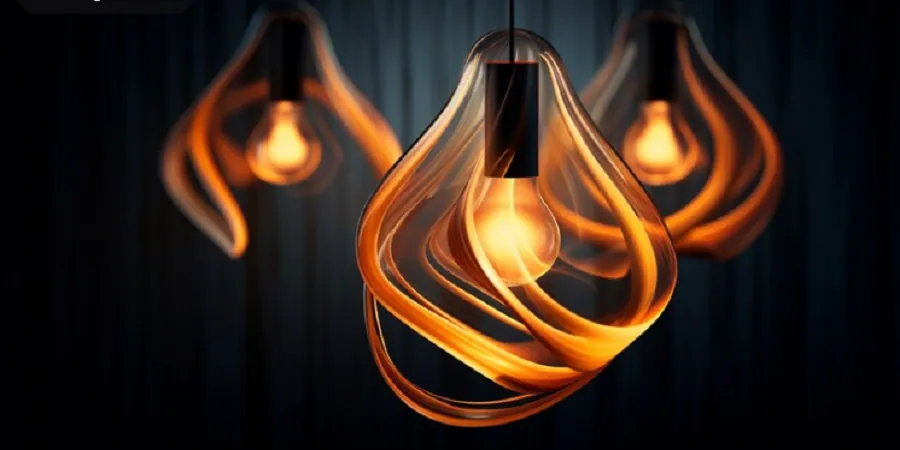
Comments